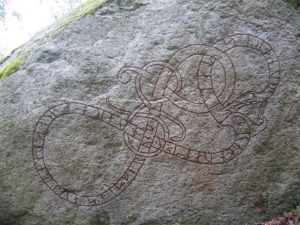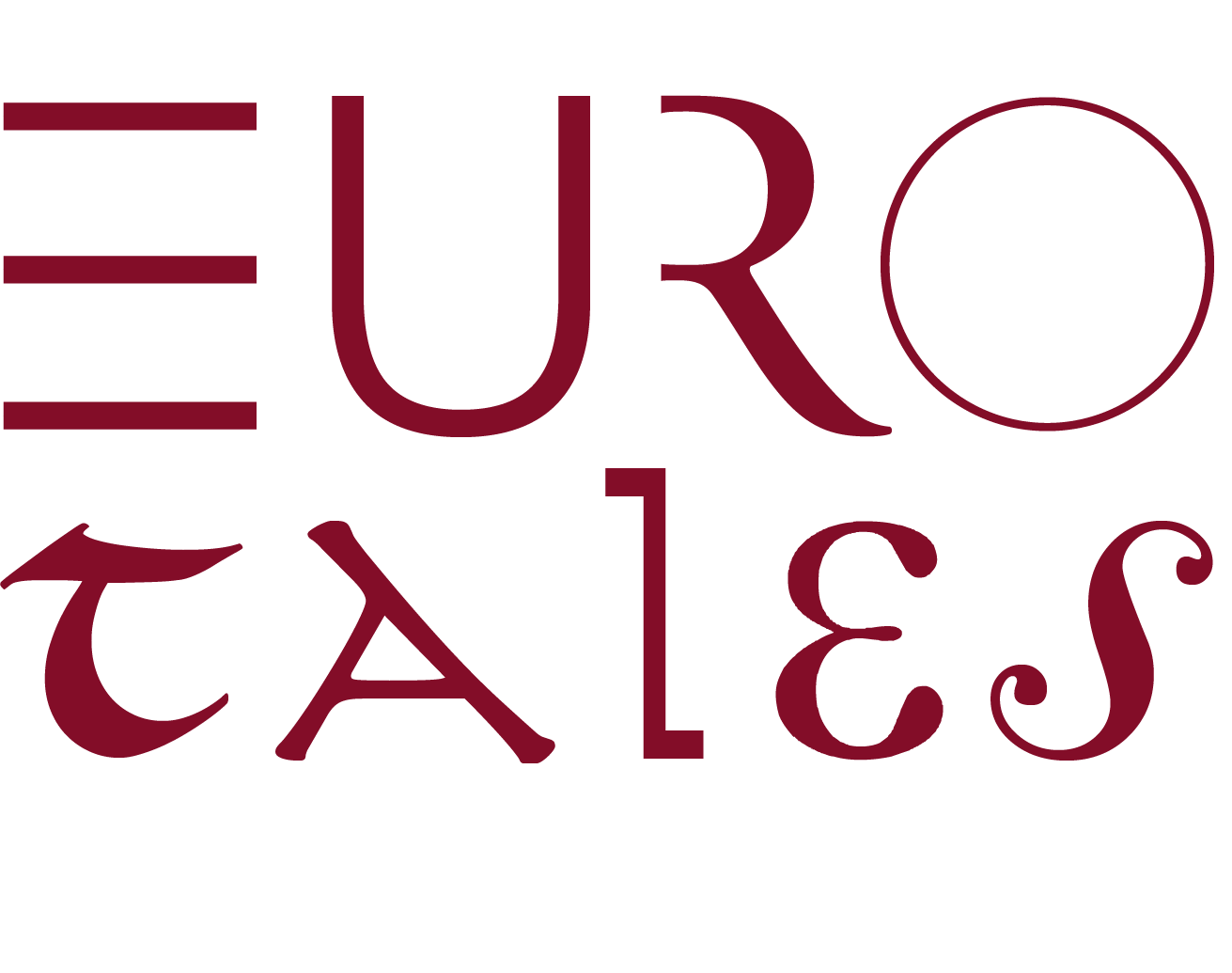Description

 This runestone has two sides inscribed with looped and ornamented rune bands, in a late Urnes style (1060-1100 CE), which is characterized by slim and highly stylized animal forms, with interweaving. It is one of 29 known stones that refer to Swedish men (and one woman) travelling to Byzantium, along the Dnieper-Baltic-Istanbul route. The language is Old Norse, as on all Scandinavian runestones of the Viking Age. It names a high-ranking Swedish man called Ragnvaldr, identified (on Side B) as the leader of a retinue (part of the Varangian Guard) in Grikkland (‘Greek land’). This Old Norse name for the Byzantine Empire is found in only two other runestone inscriptions (U374, U 540). The inscription on Side A says that he had the stone inscribed to commemorate his mother Fastvé. Although there is no agreement as to any single purpose for runestones, most of the ones from this late Viking Age memorialize the person for whom the runestone was raised, who had it made, and how these people were related to each other. Some refer to the social status of the commemorated person, or foreign travel, or place of death, and sometimes there is a prayer. We understand that both celebrating/memorializing the names of important people, and establishing some sort of inheritance, perhaps concerning the ownership of property, are likely to have been behind the carving and placing of these extraordinary monuments. It has been suggested (Sawyer 120) that this inscription shows Ragnavaldr declaring that he has come home and can look after his maternal inheritance, which may have been considerably enlarged by his activities in Byzantium, or along the way there and back, as other runestones in Sweden (Sö 163, Sö 165) indicate (Jesch 99).
This runestone has two sides inscribed with looped and ornamented rune bands, in a late Urnes style (1060-1100 CE), which is characterized by slim and highly stylized animal forms, with interweaving. It is one of 29 known stones that refer to Swedish men (and one woman) travelling to Byzantium, along the Dnieper-Baltic-Istanbul route. The language is Old Norse, as on all Scandinavian runestones of the Viking Age. It names a high-ranking Swedish man called Ragnvaldr, identified (on Side B) as the leader of a retinue (part of the Varangian Guard) in Grikkland (‘Greek land’). This Old Norse name for the Byzantine Empire is found in only two other runestone inscriptions (U374, U 540). The inscription on Side A says that he had the stone inscribed to commemorate his mother Fastvé. Although there is no agreement as to any single purpose for runestones, most of the ones from this late Viking Age memorialize the person for whom the runestone was raised, who had it made, and how these people were related to each other. Some refer to the social status of the commemorated person, or foreign travel, or place of death, and sometimes there is a prayer. We understand that both celebrating/memorializing the names of important people, and establishing some sort of inheritance, perhaps concerning the ownership of property, are likely to have been behind the carving and placing of these extraordinary monuments. It has been suggested (Sawyer 120) that this inscription shows Ragnavaldr declaring that he has come home and can look after his maternal inheritance, which may have been considerably enlarged by his activities in Byzantium, or along the way there and back, as other runestones in Sweden (Sö 163, Sö 165) indicate (Jesch 99).
From information on other runestones (U 309, U 310, U 311) this man has been identified as Ragnvaldr Ingvarrson, a member of the wealthy Jarlabanke clan -- , who, according to another suggestion, may have died with his father Ingvar and uncle Ingifastrat at some time before 1050, possibly in the Rus’-Byzantine War of 1043 (Pritsak 393-4). From its decorative style we infer that the stone was inscribed many years after his death, even though its words clearly indicate that the order or commission to carve the stone was made by him. Another indication of the runestone having been inscribed a considerable time after Ragnavaldr’s presumed date of death is the haglaz (ᚼ) rune* found as the third element in Ragnavaldr’s name, which represents a sound that became common only after the late 11th c. Perhaps Ragnvaldr did not perish in battle, and lived to enjoy his property. Of the 29 known “Greek” runestones, 24 are extant, the others (U 270, U 374, U446, 1087, and Sm 46) having been lost or destroyed in the course of farm or construction work, but had been recorded in earlier times). 18 of the 29 were found in the region of Uppland. Some of them, like this one, indicate that they belonged to the Varangian Guard, others do not refer to military life and some of these may memorialize traders or pilgrims. Several record death overseas; others, like this one, mark the safe return of the traveler. Other travelers’ runestones record expeditions to western destinations (such as Britain). The travellers’ runestones are a small part of the overall large number of runestones (approximately 3,000) found all over Scandinavia and, in smaller numbers, overseas (there are, for example, 26 in the Isle of Man). *The haglaz rune here indicates the /ɣ/ sound, a velar approximant which is formed by almost making a /g/ sound but not fully closing the throat, or trying to say /j/ (‘y’) but with the tongue pushed back to the /g/ position.
Storage
The sides are clear from moss or other overgrowth and the entirety of both the runic band inscriptions, which are coloured in red, is clearly visible. The carvings are on the West and the South sides.
Bibliography
Omeljan Pritsak, The Origin of Rus', Cambridge (Mass.), Harvard University Press, 1981
Links
Transcription author: Rundata.info
Card author: Margaret J-M Sonmez
Translation author: English: Rundata.info. Modern Swedish: Andreas Forsgren
Ragnvaldr Runestone
Trace type: signing up
Material: Rock: a huge boulder
Dimensions: Approx. 500 cm wide, 300cm high, and 18cm deep, 18m in circumference.
Dating: 1000-1200
Year: 1050-1100
Language: Old Norse
Writing systems: Runic writing

